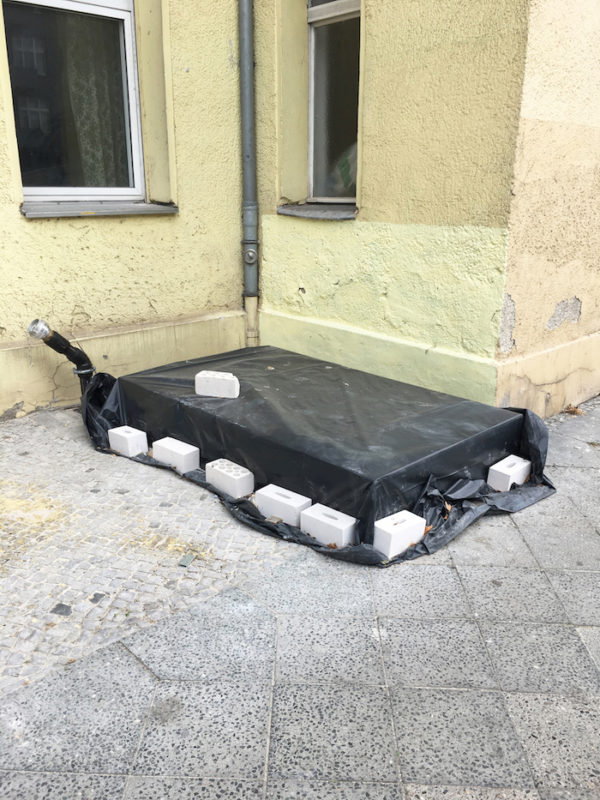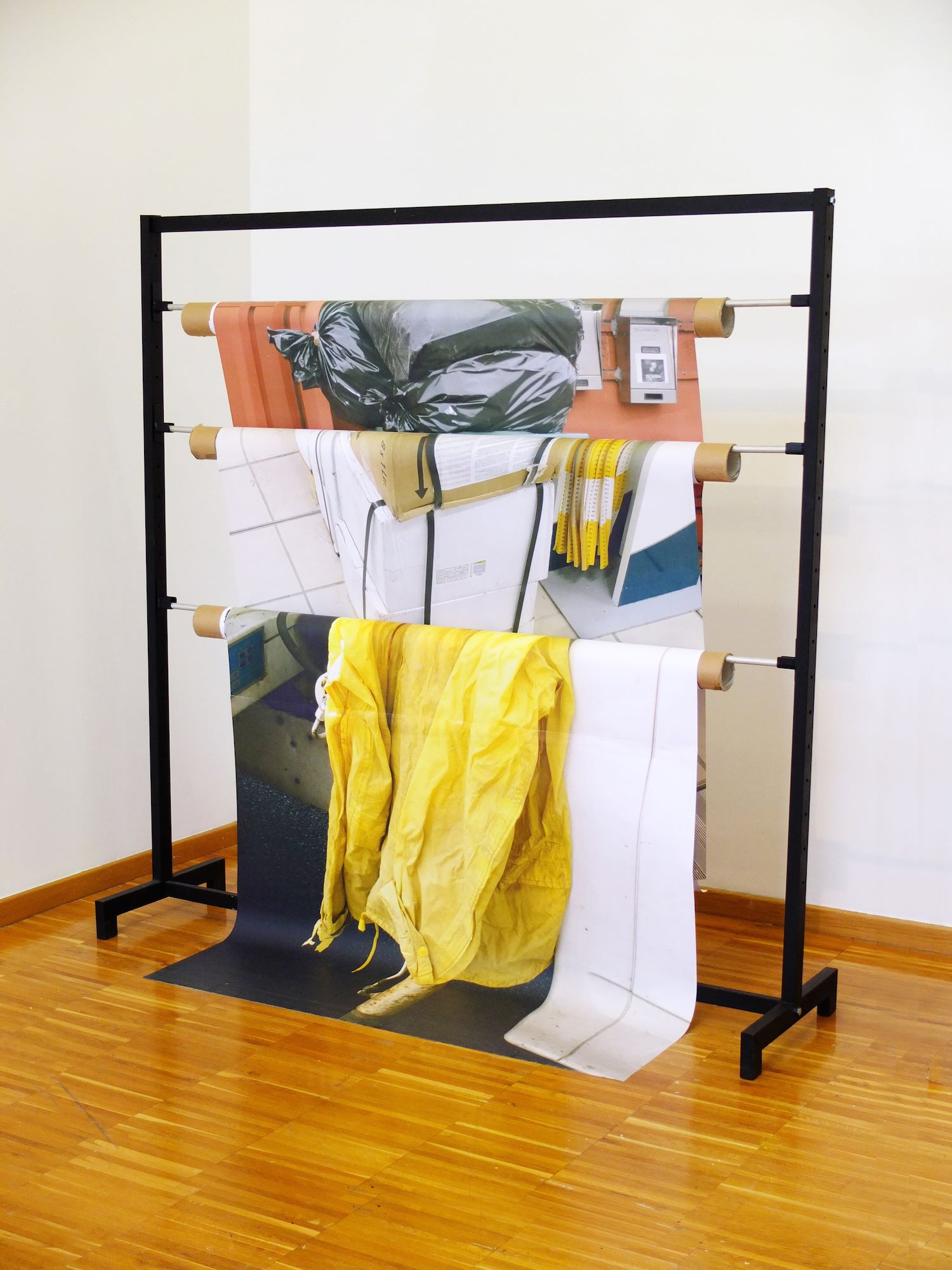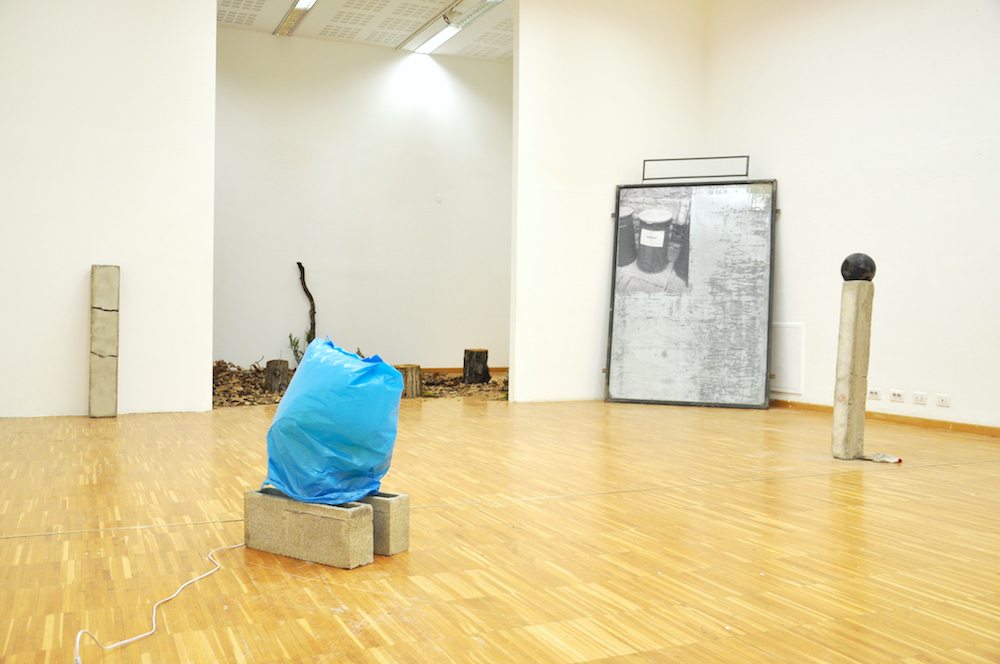LINDA ALBORGHETTI & MARCO BELLINI
by Michele Amaglio
01.04.2017


Instances of chance have a fundamental role in the work of Linda Alborghetti and Marco Bellini, a young duo of Italian artists currently working in Berlin. A haphazardness which encloses spontaneity and irrationality in which the everyday life, the sculptural and the failure become key concepts of the creative process. The work of this young artist duo spaces between photography and sculpture through a visual exploration of the phenomena which happen daily in the urban structure. Photography and sculpture are placed in continuous dialogue as physical translators of the tensions between rationality and chance, creation and error.
Linda Alborghetti and Marco Bellini make use of found objects, reinterpreting them through a displacement into new contexts. This practice recalls the model of the ready-made of Marcel Duchamp, in which the accomplishment of the artist does not reside in the act of creation but in the choice of an object which, once decontextualized, takes on a new meaning. When conceived as a critique to rationality and functionalism, the use of found objects assumes an ulterior political message directed to the consumerist society. Observed through this frame, the ready-mades of Linda Alborghetti and Marco Bellini reappropriate waste as the starting point for an ongoing reflection. An example can be found in the exhibition “Glue and Glitters”, which consists in a presentation of a discarded, broken window frame: the object shifts context, from the street to the gallery walls, inviting the spectator to consider the new shape and function of that which was earlier considered as waste.
Linda Alborghetti and Marco Bellini make use of found objects, reinterpreting them through a displacement into new contexts. This practice recalls the model of the ready-made of Marcel Duchamp, in which the accomplishment of the artist does not reside in the act of creation but in the choice of an object which, once decontextualized, takes on a new meaning. When conceived as a critique to rationality and functionalism, the use of found objects assumes an ulterior political message directed to the consumerist society. Observed through this frame, the ready-mades of Linda Alborghetti and Marco Bellini reappropriate waste as the starting point for an ongoing reflection. An example can be found in the exhibition “Glue and Glitters”, which consists in a presentation of a discarded, broken window frame: the object shifts context, from the street to the gallery walls, inviting the spectator to consider the new shape and function of that which was earlier considered as waste.

The reference to Duchamp is not casual. The work of the couple recalls themes tied to the avant-garde of the beginning of the 1900’s. Themes such as the irrational, the non-sense and the casual have a strong dadaist stamp, born through intellectuals who escaped in Switzerland in a period of strong socio-economic tensions at the beginning of the Great War. DADA, defined by Hans Arp as “the uprising of the non-believers against the disbelievers'', defined the overturning of bourgeois values and the negation of values, ethics and aesthetics: art against art itself. Desiring to scorn the so-acclaimed virtues of rationality, contemporary art seems to have embraced again the dadaist spirit in face of a society which, on the contrary, has lost its reason. Art returns to an extremely political message, willing to upset the few remaining certainties. The work of Alborghetti and Bellini borrows this spirit in their will of mocking functionalism and rationality through their installations. In “Le cose che ti ha detto il contrario” (“The things that told you the opposite'') we find a mutilated pair of boots, three photographs taken by mistake and willingly printed at imprecise formats and a jerry can containing a flawed football. In this case the artwork becomes a critique to the paradigms and canons of arts by embarking in an anti-aesthetic journey against art itself.
Photography also plays an important role in their research. The urban material, treated similarly to the sculptural works, becomes a starting point for an investigation into how we live and experience the city. The spontaneous shapes which are born by the continuous changes of the urban structure formed by scaffoldings, crush barriers, construction sites and temporary buildings become a cue for their installations and sculptural works. Amongst these elements photography represents a tool to isolate the shapes and address the gaze of the audience towards the details of the urban daily life.
“We collect images daily as if it was something maniacal, but at the same time something completely natural and automatic. To us, stacks, ruins, transportations, people, domestic animals, lost objects, temporary buildings...become an object of research.”
Photography also plays an important role in their research. The urban material, treated similarly to the sculptural works, becomes a starting point for an investigation into how we live and experience the city. The spontaneous shapes which are born by the continuous changes of the urban structure formed by scaffoldings, crush barriers, construction sites and temporary buildings become a cue for their installations and sculptural works. Amongst these elements photography represents a tool to isolate the shapes and address the gaze of the audience towards the details of the urban daily life.
“We collect images daily as if it was something maniacal, but at the same time something completely natural and automatic. To us, stacks, ruins, transportations, people, domestic animals, lost objects, temporary buildings...become an object of research.”


“File Away” and “Covered Things” are born thanks to this mass of images, which are taken out of the archive and reinterpreted in sculptural form. “File Away” specifically explores the relationship between image and display by using various display methods which are not conventional to photography but are frequently found in commercial settings. A stand for metered textiles is used as support for three big images; the spectator is invited to interact with them, editing the visible portion of the prints. Yet, the prints remain interrupted and impossible to see in full-length. A magazine stand is used to contain 1000 photographs printed singularly on 500 A4 , inviting the audience to take a copy. By doing so every person will have a different experience of the artworks, gradually consuming it whilst taking away the copies. Two images are glued on billboards and re-photographed and traditionally framed into the gallery setting. Through these processes the image is subject to different exhibitive processes, layered in one unique print. Photography becomes the pivotal tool for an investigation on daily reality, capable of isolating form and physicality from the urban world, and a research on the methods of reproduction of the photograph.
The work of Linda Alberghetti and Marco Bellini appropriates some methods which belong to the past to propose their vision of contemporary existence. Their installations result from randomness, irrationality and glorification of the error which, in their simplicity, convey a clear, cutting and sometimes anti-aesthetic message against the very systems of the arts.
The work of Linda Alberghetti and Marco Bellini appropriates some methods which belong to the past to propose their vision of contemporary existence. Their installations result from randomness, irrationality and glorification of the error which, in their simplicity, convey a clear, cutting and sometimes anti-aesthetic message against the very systems of the arts.

info@ardesiaprojects.com